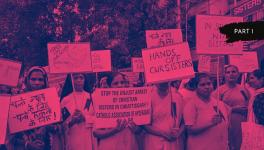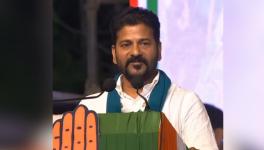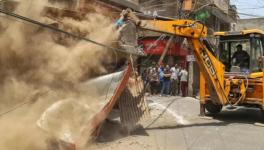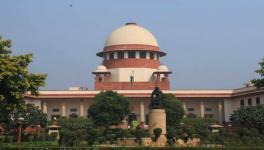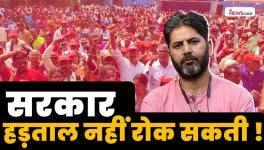Pot Calling the Kettle Black?

Perhaps it is a bad time for the allahabad high court. Some 15 years ago, Justice Markandey Katju sitting in the Supreme Court observed in a judicial order:-
“The Allahabad High Court really needs some house cleaning (both Allahabad and Lucknow Bench), and we request Hon'ble the Chief Justice of the High Court to do the needful, even if he has to take some strong measures, including recommending transfers of the incorrigibles.”
(Raja Khan v. U.P.Sunni Central Wakf Board, 2011 (2) SCC 741)
One is not sure whether the Augean stables have been cleared or not. But we get more news of judges of that court, in the latest instance, due to the remarks (now recalled) passed against Justice Prashant Kumar of the Allahabad High Court by the Supreme Court in an order passed on August 4. Never in the 75 years of history of the Supreme Court had any such judicial order been passed against a sitting judge of a High Court.
Following this, in fact, thirteen senior judges of the Allahabad High Court yesterday wrote to the Chief Justice of the High Court to not abide by the Supreme Court’s order. In the morning today, on August 8, in an unusual development, the Supreme Court recalled the order, noting that its intention was “not to cause embarrassment or cast aspersions on the concerned judge.”
In the morning today, on August 8, in an unusual development, the Supreme Court recalled the order, noting that its intention was “not to cause embarrassment or cast aspersions on the concerned judge.”
An erroneous order and a harsh stricture
On May 5, 2025, a bench of Justice Kumar had passed a controvertible order in a criminal miscellaneous application. The case originally arose from a private complaint by a party, who was an unpaid seller, for the recovery of a balance amount of nearly Rs 7 lakh rupees. This was, in essence, a civil dispute - something the police pointed out while refusing to register an FIR. However, the magistrate not only took cognizance of the complaint but also initiated magisterial inquiry, and at the end of that, issued process for the offences punishable under Section 406 of the Indian Penal Code, relating to criminal breach of trust. On challenge, Justice Kumar at the High Court upheld the magistrate’s order. Given that there was no question of entrustment of goods in the case, there could not have been a charge under either Sections 420 (cheating) or 406 (criminal breach of trust). And yet, back to back, two successive courts had allowed the conversion of a purely civil dispute into a criminal proceeding, in what was essentially an abuse of the legal process.
When the aggrieved party finally came before the Supreme Court in a criminal appeal, the division bench comprising Justices J.B.Pardiwala and R Mahadevan not only set aside the order of Justice Kumar (noting that it was “one of the worst and most erroneous orders [they] had come across in their respective tenures as judges” of the top Court), but also gave shocking directions. Para 24 of the order spelt out that the Chief Justice of the Allahabad High Court should withdraw the criminal appeal from Justice Kumar and he should be made to sit as a junior member of a division bench and that he should not be assigned any criminal cases.
Expected uproar followed. First, thirteen judges of the High Court wrote to the High Court Chief Justice urging him to not implement the directions, even as CJI B.R. Gavai wrote to Justice Pardiwala’s bench requesting the reconsideration of the strictures.
On the morning of August 8, today, recalling the earlier directives, Justice Pardiwala observed, “The HCs are not separate islands that can be disassociated from the institution. Whatever we said in our order was to ensure that the dignity of the judiciary is held high.” He noted that as per CJI Gavai’s request, paras 25 and 26 from the August 4 order were hereby deleted, and left it to the High Court Chief Justice to “look into the matter.”
How the Supreme Court overstepped
The Supreme Court’s handling of the issue rightfully raised concerns, particularly when it could have simply set aside the problematic order (and we must note that the order was indeed of an “erroneous” nature, and such abuse of the process of law has been repeatedly discouraged by precedents). Instead, the Court seems to have overstepped to exercise a supervisory jurisdiction it does not have on the judicial side, and usurped the role of the Chief Justice of the High Court as master of the roster.
It must be remembered that under the scheme of the Constitution regarding judiciary, the High Courts of different states are not made subordinate to the Supreme Court and the latter does not exercise any supervisory control over the High Courts which is not the case when the High Courts exercise supervisory powers over their subordinate courts. In fact, under Article 141, it is declared that the law made by the Supreme Court shall be binding on all the courts in India. Under Article 144, it is mandated that all the judicial authorities must act in aid of the Supreme Court. Beyond this, there are no other administrative powers vested on the Supreme Court over the high courts except that under Article 222 a judge of a High Court may be transferred to another High Court.
As far as the High Courts are concerned, it is the Chief Justice of that court who is the master of the roster in that court and no other person can ever direct or dictate as to how the roles must be prepared. The sweet irony of this ordeal is perhaps that the Supreme Court itself, under the Chief Justice of India, has been reluctant to abdicate the untrammeled powers of the master of the roster exercise by the CJI.
Despite four judges of the Supreme Court holding a press conference in January 2018 demanding democratisation of the powers of the Chief Justice of India being designated as a master of the roster, neither former CJI Ranjan Gogoi (who was part of the press meet) changed the position when he became the Chief Justice of India, nor did any subsequent chief justice agree with that demand. When that is the position, it is surprising to note that the Supreme Court can give a direction to the Allahabad HC Chief Justice not to assign any criminal work to Justice Kumar and directing that he should be made a junior member of a division bench. Such usurpation of the power of the Chief Justice of a High Court had never occurred in the past.
In its observations today morning, Justice Pardiwala acknowledged the concern of this usurpation, noting that the “directions are absolutely not interfering with the administrative power of the CJ of the HC.”
To begin with, perhaps, it would have been appropriate for the Court to take action on the administrative side, rather than on the judicial side.
From the beginning, action should have been taken on the administrative side
How, then, could the Supreme Court have treated this issue, apart from the obvious step of setting aside the incorrect order, that is? To begin with, perhaps, it would have been appropriate for the Court to take action on the administrative side, rather than on the judicial side.
For instance, in July 2024, a judge of the Punjab & Haryana High Court, Justice Rajbir Sehrawat made a judicial order in which he remarked that the “Supreme Court, itself, has clarified many times that the High Court is not subordinate to the Supreme Court and that the High Courts are not ordinary courts of unconditional appeals and that there was no scope for sundry directions being issued by the Supreme Court to a High Court regarding certain proceedings pending before the High Court.”
On hearing this, a specially constituted five-judge bench of the Supreme Court not only expunged those remarks but also observed that Justice Sehrawat’s observations were pained and random, gratuitous and unnecessary remarks. They noted that the remarks, in fact, attracted the charges of contempt but they would “exercise restraint”, in view of the proceedings initiated by the Chief Justice of the Punjab and Haryana High Court.
It must be noted that whenever the High Courts pull up the district judges and make personal criticism and record findings on those judges, the Supreme Court has always come to their rescue and granted certain advisories to the High Courts through judicial orders. In March 2023, When Sonu Agnihotri, a serving Additional Sessions Judge, passed an order against the Investigation Officer and Station House Officer while dealing with an anticipatory plea, the Delhi High Court made several comments against the judicial officer.
When that officer filed an appeal before the Supreme Court, a three-judge bench of the Supreme Court comprising of Justices Abhay S. Oka, Ahsanuddin Amanullah and Augustine George Masih, in November 2024, not only set aside the observation but also stated as follows:-
"In a given case, after writing several sound judgments, a judge may commit an error in one judgment due to the pressure of work or otherwise. The higher court can always correct the error. However, while doing so, if strictures are passed personally against a judicial officer, it causes prejudice to the judicial officer, apart from the embarrassment involved. We must remember that when we sit in constitutional courts, even we are prone to making mistakes. The High Court could not have used a judgment on the judicial side to advise individual Judicial Officers. That can only be done on the administrative side in an appropriate case.”
The Court also noted that describing the appellant's approach as 'judicial misadventure' was also "improper". "To err is human. Almost all courts in our country are overburdened," the bench said. The bench noted that judges work in stress and every judge, irrespective of his post and status, is likely to commit errors. The bench pointed out that the superior courts exercising their powers can set aside erroneous orders and expunge uncalled and unwarranted observations.
"While doing so, the superior courts can legitimately criticise the orders passed by the trial courts or the appellate courts by giving reasons. There can be criticism of the errors committed, in some cases, by using strong language. However, such observations must always be in the context of errors in the impugned orders," the bench had said.
"While doing so, the courts have to show restraint, and adverse comments on the personal conduct and calibre of the judicial officer should be avoided. There is a difference between criticising erroneous orders and criticising a judicial officer. The first part is permissible. The second category of criticism should best be avoided," the bench had added.
The Court said that whenever action is proposed against a judicial officer on the administrative side, they are afforded the full opportunity to clarify and explain their position. But if such personal adverse observations are made in a judgment, the judicial officer’s career gets adversely affected, it had noted.
The bench had ended its judgment with the following remarks:-
“every Judge, irrespective of his post and status, is likely to commit errors. In a given case, after writing several sound judgments, a judge may commit an error in one judgment due to the pressure of work or otherwise. As stated earlier, the higher court can always correct the error. However, while doing so, if strictures are passed personally against a Judicial Officer, it causes prejudice to the Judicial Officer, apart from the embarrassment involved. We must remember that when we sit in constitutional courts, even we are prone to making mistakes. Therefore, personal criticism of Judges or recording findings on the conduct of Judges in judgments must be avoided.”
In pulling up the judges of the district judiciary the High Courts are also no exception.
We must hasten to add that no court can be called a “subordinate court”.
Here, we refer to “subordinate” courts only in the context of appellate, revisional or supervisory jurisdiction.”
(Sonu Agnihotri vs Chandra Shekhar, 2024 INSC 888)
In fact, on an earlier occasion, in April 2017, when a judge of the Himachal Pradesh High Court wrote a revisional order in a rent control matter and appeal was filed against the same, the Supreme Court, unable to understand the English used in the judgment, had merely set aside that order only on the ground that the order was ununderstandable. It held:-
“After hearing learned counsel, it is not possible to comprehend the contents of the impugned order passed by the High Court. The order passed by the High Court is, therefore, set aside and the matter is remanded to the High Court for fresh consideration on merits. The High Court will hear the matter de novo”
(Sarla Sood v. Pawan Kumar Sharma, SLP (C ) 7768/2017)
In pulling up the judges of the district judiciary the High Courts are also no exception. In February 2017, a division bench of the Madras High Court had directed a district judge to undergo judicial training at the State Judicial Academy due to the blunders committed by him in framing charges and awarding sentences. Subsequently, when the bench was informed that the concerned judge had gone for training as directed by the Court they observed, “We believe that at least now he would have learnt his judicial responsibilities”
As recently as just last month, the same High Court had directed the Principal Sessions Judge of a new district to appear before the Court with relevant documents and provide explanation about the grant of anticipatory bail to the accused in a case. The woman judge subsequently appeared and offered her explanation in open court.
A damaging domino effect
All these public admonitions never take note of the observations made by the Supreme Court quoted above. On the other hand, they come from an imaginary position that as judges of the higher judiciary, they possess superior knowledge and experience and the judges of the lower courts are worthless with little knowledge There is very little realisation that what sets into motion is a domino effect: the Supreme Court admonishes High Court judges on the judicial side, and High Court judges pass adverse remarks against members of the district judiciary. The net result of this is that the entire judicial machinery is discredited as a whole.
On one hand, judges take pleasure in making the lower court judges in attending judicial academy programs for getting better orientation. On the other hand are instances such as when a sessions judge was pulled up by the Supreme Court for granting death sentence on the basis of the orientation speech of the Chief Justice of the High Court at the judicial academy. In December 2012, the Supreme Court noted:
“….he had referred to the speech of the then learned Chief Justice of the High Court, and it is clearly demonstrable that the same has influenced his appreciation, analysis and perception. Being influenced by the erroneous notions of law and speech of the learned Chief Justice, may be understanding it totally out of context, his passion and prejudices have dominated over his reasoning faculties and the result, as I perceive, is devastating.”
(Oma @ Omprakash & Anr v. State of Tamilnadu, 2013 (3) SCC 440)
Needless to say, the order passed by the Sessions Judge and confirmed by the High Court was set aside. Nowhere was the High Court pulled up for not noticing these puerile and unacceptable reasons given by the sessions judge while granting a death sentence.
The late Ram Jethmalani once argued in a criminal trial before the Sessions Court (Pudukkottai), argued the appeals before the Madras High Court and later, in the Supreme Court, circulated a note which was then quoted in a magazine:-
“Curiously, the judgment of the apex court does not even mention this serious argument, and today my students in the law college and the devotees of the swami the world over are asking: “ Does India law allow police officers to beat witnesses and does it allow the court to act on such tainted evidence?” My only answer is that our law and legal system are civilized but some Gentlemen in Black who have no experience or understanding of the system, who in all honesty and in conscience should refuse themselves from hearing complex matters of criminal law, are giving it a bad name.
This incident calls for introspection on the method of the selection of our judges of the superior court.” (The Asian Age, 2005)
Coming to the case of Justice Prashant Kumar attempting to sustain a criminal proceedings, though it was essentially a civil one, on the ground that civil matters often got delayed, it must be noted that a few decades ago the ratio between civil and criminal cases was almost equal. But it has undergone a dramatic change and in the state of Uttar Pradesh, where today it is distributed in a ratio of 25 :75.
In a speech made at the Karnataka Judicial Academy, Justice R.V.Raveendran said:-
“After independence, for several years, the num ber of civil cases and number of criminal cases pending in courts were of equal proportion. Gradually, the proportion of criminal cases has increased. At present, out of the 27.5 million cases pending in trial courts in the country, only about 83 lakhs are civil cases and 192 lakhs are criminal cases, that is, a ratio of 2: 5. I n most of the States, the criminal cases far outnumber civil cases. In the states of Bihar, West Bengal, Madhya Pradesh, Orissa, Uttarakhand and Delhi, the ratio between civil and criminal cases is around 20: 80; in the states of Uttar Pradesh, Chattisgarh, Assam and Rajasthan the ratio is around 25: 75; in the states of Maharashtra, Gujarat and Kerala, the ratio is around 35: 65; and in the states of Andhra Pradesh (united), Punjab, Haryana and in Chandigarh and other union territories, the ratio is almost equal, that is 50: 50. The exceptions appear to be only Karnataka and Tam il Nadu where the civil cases are much more and the ratio between civil and criminal cases is 60: 30.
It is stated that the existing skewered ratio on account of high pendency of criminal cases shows that the com m on m an is losing confidence in the judicial system (on account of delays, uncertainty of outcome, inflexible results, high costs, etc); and as a result more and more are disinclined to approach civil courts for relief and take law into their own hands, thereby increasing crimes and consequently increasing the criminal cases.”
(2022 (8) SCC J-1)
The Supreme Court must be aware that cheque bouncing cases, which were originally heard by civil courts under Chapter 37 of the Code of Civil Procedure, were taken out and incorporated as a criminal case to be tried by the magistrates under Section 138 of the Negotiable Instruments Act. Today the filing of such cases before the criminal courts have crossed more than 2.5 million in number and virtually derailed the trial of accused for offences under IPC.
If only the Supreme Court realises the reason for the explosive increase in the filing of criminal matters, it could work towards finding methods to redeem from that position so that an ideal balance could be retained. Unfortunately, the Court has chosen to pull up a High Court judge for his observation in a criminal matter and then punished him permanently by imposing a ban on his hearing criminal matters all the way till his retirement —a move that was totally unacceptable and uncalled for.
If only the Supreme Court realises the reason for the explosive increase in the filing of criminal matters, it could work towards finding methods to redeem from that position so that an ideal balance could be retained.
A record not forgotten
The other notable irony that arises from this situation is that it is not as if the senior member of the bench, Justice Pardiwala, has never made erroneous statements in his order. During his tenure as a sitting judge of the Gujarat High Court, he wrote in one of his orders as follows: -
“If I am asked by anyone to name two things, which has destroyed this country or rather, has not allowed the country, to progress in the right direction, then the same is, (i) Reservation and (ii) Corruption. It is very shameful for any citizen of this country to ask for reservation after 65 years of independence. When our Constitution was framed, it was understood that the reservation would remain for a period of 10 years, but unfortunately, it has continued even after 65 years of Independence.”
When there were protests against this observation and some members of the Parliament started the process for moving an impeachment motion against Justice Pardiwala in 2015, the learned Judge deleted the above portion. He said it was unnecessary for his order to have such an “obiter”. Thus, he could erase his own order and steer clear of all controversies until finally landing up before the Supreme Court.
A matter put to rest, for now
While delivering his order today morning, Justice Pardiwala noted:
“For 90% of the litigants in the country, the High Court is the final Court of Justice. Only the remaining 10% can afford to approach the Supreme Court. The litigants who come to the Court expect the justice delivery system to function in accordance with law and not to obtain absurd or irrational orders.”
A reading of this order might close the present controversies, but does not appear to end the controversy of overlordism adopted by higher courts in the matter of dealing with appeals and the unjustified and undignified criticism freely dolled out on such judges. The fundamental question of whether the Supreme Court has power to interfere with the administrative decision of the High Courts and whether the High Courts have similar powers while dealing with subordinate judges and criticizing them for their judicial orders in an undignified manner, is to be answered some day or other.
All these dramas must cease some day and people should work in the larger interest of the nation. Ultimately, we will be proving Justice Michael Kirby, President, Court of Appeal, Supreme Court of Australia who once said:
“Courts are public theatres in which many of the human dramas of society are played in an abbreviated and somewhat stylized fashion.”
Justice K. Chandru is a retired judge of the Madras High Court
Courtesy: The Leaflet
Get the latest reports & analysis with people's perspective on Protests, movements & deep analytical videos, discussions of the current affairs in your Telegram app. Subscribe to NewsClick's Telegram channel & get Real-Time updates on stories, as they get published on our website.









